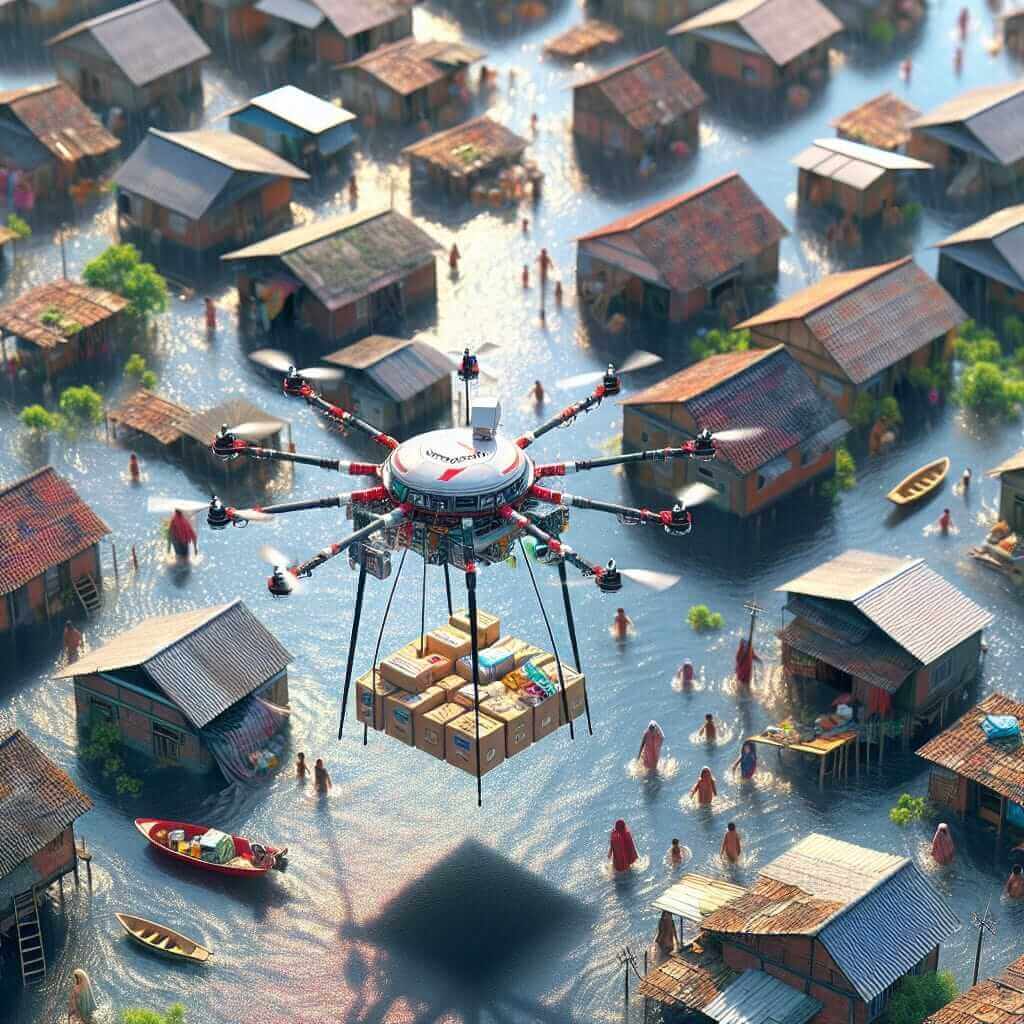The Reading section of the IELTS exam often includes topics of current global relevance. One such topic that has garnered frequent attention is how technology is enhancing disaster response capabilities. Given its pertinence and the ongoing evolution in disaster management technologies, this topic is highly likely to appear in future IELTS Reading exams. In this article, we will provide a comprehensive analysis of this subject alongside a detailed practice reading test to help you prepare effectively.
Main Content
Practice Reading Test on Disaster Response Capabilities
Passage (Medium Text)
Title: The Role of Technology in Enhancing Disaster Response Capabilities
Technological advancements have revolutionized disaster response capabilities worldwide. From early warning systems to satellite imagery and drones, technology plays a pivotal role in mitigating the impacts of natural disasters. Early warning systems utilizing algorithms and artificial intelligence can predict potential disasters, enabling timely evacuations and preparedness. For instance, earthquake early warning systems in Japan and tsunami alert systems in the Pacific are prime examples of how technology can save lives.
Satellite imagery and geographic information systems (GIS) are instrumental in assessing disaster-prone areas and organizing relief operations. By providing real-time data, these technologies allow authorities to allocate resources effectively and coordinate rescue missions more efficiently. The use of drones has further enhanced these capabilities by providing aerial views of affected regions, delivering supplies, and establishing communication networks in areas with damaged infrastructure.

Another significant technological advancement is the application of big data analytics in disaster management. By analyzing vast amounts of data from various sources, authorities can predict trends, identify risk factors, and implement strategies to minimize damage. Social media platforms have also emerged as valuable tools for disseminating information and mobilizing community support during disasters.
Moreover, the integration of mobile applications and digital platforms has improved public awareness and education regarding disaster preparedness. Apps that provide real-time updates, safety tips, and emergency contact information have become essential tools for individuals and communities.
Despite the numerous benefits, challenges remain in integrating these technologies into disaster response strategies. Issues such as data privacy, technological disparities among regions, and the need for skilled personnel require ongoing attention. Nonetheless, the continuous evolution of technology promises further enhancements in disaster response capabilities, ultimately reducing the devastating impacts of natural disasters.
Questions
Multiple Choice
Choose the correct letter, A, B, C or D.
-
What is a key benefit of early warning systems mentioned in the passage?
- A. They completely prevent natural disasters.
- B. They enable timely evacuations and preparedness.
- C. They operate without the need for human intervention.
- D. They replace traditional disaster response methods.
-
How do satellite imagery and GIS aid in disaster management?
- A. By providing aerial views for the public.
- B. By delivering supplies directly to affected areas.
- C. By offering real-time data to manage resources.
- D. By replacing the need for human rescuers.
True/False/Not Given
Do the following statements agree with the information given in the Reading passage? Write:
- TRUE if the statement agrees with the information
- FALSE if the statement contradicts the information
- NOT GIVEN if there is no information on this
- The use of drones has completely eliminated the need for human rescue teams.
- Social media platforms have become crucial for community support during disasters.
- Data privacy is not a concern when using big data analytics in disaster management.
Answer Key
- B: The passage mentions that early warning systems enable timely evacuations and preparedness, which corresponds with option B.
- C: Satellite imagery and GIS provide real-time data that help in resource management, as noted in the passage, matching option C.
- FALSE: The passage states that drones enhance capabilities by providing aerial views and delivering supplies but doesn’t claim they eliminate the need for human rescue teams.
- TRUE: The passage highlights that social media platforms are valuable for disseminating information and mobilizing community support, aligning with this statement.
- TRUE: Data privacy is mentioned as an issue in the integration of technology in disaster management.
Common Mistakes in These Question Types
- Multiple Choice: Misinterpreting the text because of overthinking answers; always go with the information provided in the passage.
- True/False/Not Given: Assuming information not mentioned or interpreting opinions instead of facts; focus strictly on what is stated or not stated.
Vocabulary
- Mitigating (verb): /ˈmɪtɪɡeɪtɪŋ/ – making less severe.
- Allocate (verb): /ˈæləkeɪt/ – distribute resources or duties for a particular purpose.
- Disseminating (verb): /dɪˈsɛmɪneɪtɪŋ/ – spreading or distributing information widely.
- Infrastructure (noun): /ˈɪnfrəstrʌktʃər/ – the basic physical systems of a business or nation.
Grammar Focus
- Relative Clauses: These are essential for combining information effectively. For example:
- “Early warning systems that utilize algorithms can predict potential disasters.”
- “Satellite imagery and GIS, which provide real-time data, are essential in disaster management.”
Conclusion
To score high in the IELTS Reading section, practice is critical. Regularly engage with passages on current global issues like technology in disaster response as these are relevant and likely to appear in exams. Study the vocabulary and grammar structures, and work diligently on understanding the format and demand of different question types.
For more comprehensive resources, tips, and practice tests, continue exploring our content on “IELTS.NET – Learning IELTS Online.”